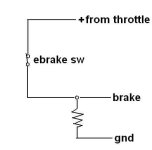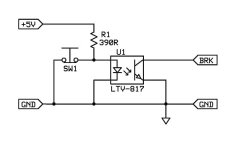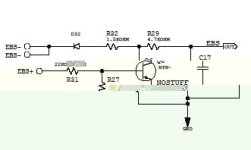yopappamon said:
I just really didn't want to have to pry off any of the glue.
Understandable.

It's always so nice when you design and implement something, only to find out it's got to be done a different way to actually work.

I kinda do that a lot more than I ought to.

Oh, if you ever need those optos mentioned above, you can find some in any PC power supply, sometimes three or four. Also in old UPSs.
It appears to be working fine with the resistor. The shifters are part of the brakes, so I can't use regular ebrakes.
I have a similar problem with DGA in that my front brake is a locking lever, so that I can keep the bike from rolling while I attach a trailer, or load the trailer, etc, or just to keep it from rolling around when parking it, etc. So I put a switch on the actual brake arms (or rather, on the cable).
http://www.endless-sphere.com/forums/viewtopic.php?p=277113#p277113
It ended up messier than that, with some extra zip ties on the brake arm to catch the switch when it slipped off the cable retainer during harder braking,

but the basic idea was sound enough, and works. It drives a relay that switches both the brake line on the controller and the 12V motorcycle taillight's brake light.
I already had one that ran off the Fusin's hall ebrake, but the Lyen controller didn't have the 5V supply on the brake line, so I went with a second relay rather than modify the first, so I could swap controllers/motors at need for experiments or emergencies.

I will have the identical issue to yours once I get the cargo bike designed and built, as I want to use the combo levers that came with the Trek frame on it (once I do some major maintenance on them, as they're pretty grungy and missing covers, etc.)
THat switch is going to be changed to a microswitch with a wheel on it at some point, when I have time to make the bracket to hold the switch. It'll work a lot better than the existing one, as the wheel will be held in the pushed position by the brake arm itself until I squeeze the brakes, and then it will engage the NO part of the microswitch as it unpushes the wheel/lever on the switch.
I used reeds once on front and rear (for my brake lights, before I motorized it), but they cracked (I don't know why, since the speedo one on the front fork didn't). They were just bare reeds pulled out of old keyboards; would rather have the encapsulated kind but haven't run into any in junk in a while.





